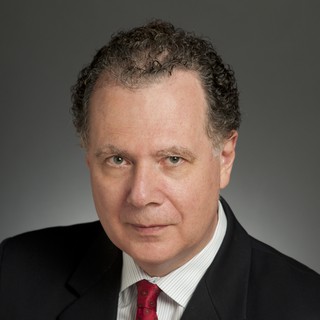The distinguished venture capitalist Dr. Henry Kressel and I just published a proposal to restore American economic growth in The American Interest. You’ll have to subscribe to this excellent magazine to read the whole thing, but the introduction is posted on its website:
America faces a crisis of innovation, and our survival as the world’s industrial leader depends on its resolution. Overall research and development spending has stagnated as a proportion of national income since the 1950s, and our competitors are gaining on us. Even worse, the kind of fundamental R&D that produces game-changing innovations rather than incremental improvements has declined sharply relative to the size of the economy.
More is at stake than America’s future growth prospects. Scientific innovation and national security have comprised two sides of the same coin since World War II. Not for a generation have America’s security requirements begged for innovation as much as they do today. In place of a few large, well-defined threats that America faced in the relatively stable power balance of the Cold War, we now face a very large number of smaller and poorly defined threats in a chaotic world environment. The Bush and Obama Administrations had hoped to foster a new kind of stability, either by promoting democratic regimes in unstable theaters or by fostering multilateral cooperation and engaging prospective adversaries. Those hopes have faded. Reluctantly, America’s foreign policy community has come to accept the premise that we will confront a kaleidoscope of shifting threats in an indefinite span of instability.
Regrettably, the military that America built to beat the Soviet Union is in many ways poorly equipped to address the new threat regime, and unfortunately that legacy force has not changed as much as it might have over the past two decades. Even if policymakers chose to expand on the existing platform, the public’s perception of poor returns to commitments of blood and treasure during the past decade rules out this option as a viable political stance.
Tentatively and in piecemeal fashion, the American military is introducing a new generation of military technologies. Drones, battlefield robotics and similar technologies cast a wide net over the new threat horizon, but their practical application remains limited. Cyberwar has become a buzzword for defense planners, and in consequence the application of large-scale computation to the vast amount of information acquired by remote sensors (“Big Data”) has become a theme du jour for defense research and development, as the volume of prospective threat data swamps existing capacity to process information. But the new threat profile, in which a large number of adversaries with cheap weapons in the service of suicidal fanaticism create an ever-expanding set of low-level risks, presents significant problems for sensing and information processing. Extracting an ever-fainter signal from an ever-greater volume of noise challenges our existing understanding of the problem.
The roots of American growth are dry. Venture capital investing and emerging industries are a shadow of what they were a decade ago. Employment in the companies that make up the Russell 2000 index now stands at half its 2007 level. The S&P 500 has almost restored its employment level to pre-crisis levels, but medium-sized companies are not hiring. Virtually all the employment growth during the Great Expansion that Reagan set in motion came from emerging companies. That engine is stalled out and rusting. If we want to get growth back, we need both the high-tech driver as well as the incentives from entrepreneurs.
My co-author Dr. Kressel, a prominent physicist, was a key leader at RCA Labs for a generation where his teams invented the semiconductor laser, CMOS chip manufacturing, and several other technologies that helped define the digital age. For the past thirty years he has built a strong track record investing in emerging companies at Warburg Pincus, where he is the partner responsible for the technology practice. He was there at the creation, so to speak, translating Defense Department mandates into tech breakthroughs that entrepreneurs later turned into trillions of dollars of market value and tens of millions of new jobs. There’s no-one better qualified to make this case.
I’ve already heard some complaints from free-market friends who worry that our proposals sound too much like industrial policy. But we explicitly reject industrial policy: governments should pick winners or fund businesses. But governments should fund basic research in defense, and let entrepreneurs bet on the civilian spinoffs. That’s what the Reagan Administration did. As a young consultant to the National Security Council, I executed a study at the behest of Dr. Norman A. Bailey on the economic impact of the Strategic Defense Initiative. Reagan well understood the link between defense technology and growth as well as the entrepreneurial transmission mechanism. In a Feb. 19, 1985 speech presenting National Technology Awards, Reagan stated:
Our administration has made a firm commitment to technological progress. Both of them are probably true, but one we view as nothing less than a commitment to human creativity and imagination. While we’re cutting back, wherever possible, unnecessary government spending, we’re continuing our strong commitment to basic research and development.
We have cut personal income tax rates; we plan to cut them again. This could spur savings, and higher savings could, in turn, boost the capital formation so important in funding new high-technology ventures. And we’ve rolled back needless government regulations to help provide the freedom needed by those at the frontiers of technology to experiment with new hypotheses and techniques.
In space, we’re opening the way to private enterprise; the space shuttle program is already working closely with private industry. And in 1985NASA is scheduled to deploy eight commercial communications satellites. Space technology will continue to grow even more rapidly as we pursue our plans to launch a permanently manned space station — and to do so within a decade.
In defense, we’re putting technology at the service of a decade’s old dream: the elimination of nuclear weapons. Our Strategic Defense Initiativerepresents, perhaps, the most dramatic and wide-reaching research effort to explore the means for making nuclear weapons obsolete.
Let me make one thing plain: The Strategic Defense Initiative is not a bargaining chip. It’s an historic effort on behalf of our national defense and peace throughout the world, and we intend to see it through.
The story of American technology is long and proud. It might be said to have begun with a blacksmith at his bellows, hammering out fine tools, and the Yankee craftsman using simple wood planes, saws, and mallets to fashion the fastest sailing ships on the ocean. And then came the railroad men, driving spikes across our country.
And today the story continues with the workers who built the computer in a child’s room; the engineers who designed the communications satellite that silently rotates with the Earth, shining in the sunlight against the blackness of space; and the men and women of skill and determination who helped to put American footprints on the Moon.
I support Republicans who want to restrain the federal budget. I had a lot of sympathy for Sen. Ted Cruz and his colleagues when they threw themselves in front of the train in an attempt to delay Obamacare. Austerity is not a governing platform for any party, however. The plain fact is that if we can’t get the U.S. economy out of its “new normal” doldrums with economic growth languishing in the 1%-2% range, and we can’t raise the labor force participation rate from the alarming 63% level to which it has sunk under Obama, we can’t fix the budget problems. Our economy won’t be able to bear the retirement and medical costs of the next thirty years without unacceptable pain.
Dr. Kressel and I propose to start a dialogue about the twin demands of national defense and economic growth. We can do once again what America did during the Reagan years. We still have the world’s best universities, the best scientists, and the most agile capital markets. But we don’t have unlimited time. We have a lead, but our lead is slipping, and if we don’t innovate, countries who learn to copy our present range of technologies will overtake us.










Join the conversation as a VIP Member